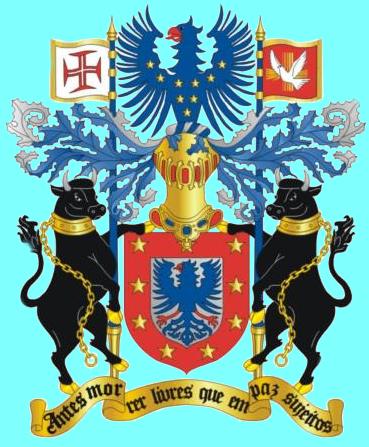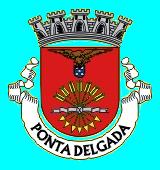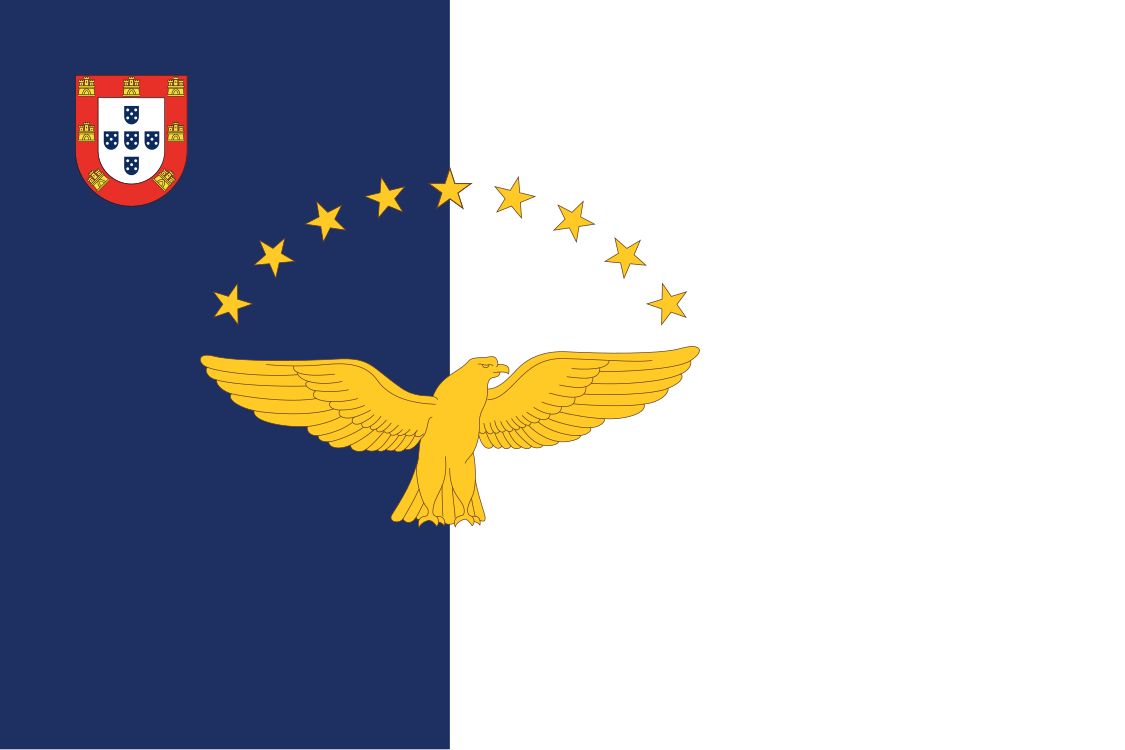Azores Islands Visit - May-June 2019


![]()
The Azores is an autonomous region of Portugal located about 850 miles west of mainland Portugal. in the Atlantic.
The islands were known in the fourteenth century, and parts of them appear in the Catalan Atlas. In 1427, a captain sailing for Prince Henry the Navigator, possibly Gonçalo Velho, may have rediscovered the Azores, but this is not certain. In Thomas Ashe's 1813 work, A History of the Azores, the author identified a Fleming, Joshua Vander Berg of Bruges, who made landfall in the archipelago during a storm on his way to Lisbon. He stated that the Portuguese explored the area and claimed it for Portugal. Other stories note the discovery of the first islands (São Miguel Island, Santa Maria Island and Terceira Island) by sailors in the service of Henry the Navigator, although there are few documents to support the claims.
There was not much interest among the Portuguese people to live in an isolated archipelago so far from civilization. Gonçalo Velho Cabral patiently gathered resources and settlers for the next three years (1433–1436), however, and sailed to establish colonies first on Santa Maria and then on São Miguel.
The archipelago was largely settled from mainland Portugal. Portuguese settlers came from the provinces of Algarve, Minho, Alentejo and Ribatejo as well as Madeira. São Miguel was first settled in 1449, the settlers – mainly from the Estremadura, Alto Alentejo and Algarve areas of mainland Portugal, under the command of Gonçalo Velho Cabral – landed at the site of modern-day Povoação. Vila Franca do Campo, then the capital of the island, was devastated by an earthquake and landslide that killed about 5,000 people, and the capital was moved to Ponta Delgada. The town of Vila Franca do Campo was rebuilt on the original site and today is a thriving fishing and yachting port. Ponta Delgada received its city status in 1546.
The first reference to the island of São Jorge was made in 1439 but the actual date of discovery is unknown. In 1443 the island was already inhabited but active settlement only began with the arrival of the noble Flemish native Wilhelm Van der Haegen. Arriving at Topo, where he lived and died, he became known as Guilherme da Silveira to the islanders. João Vaz Corte-Real received the captaincy of the island in 1483. Velas became a town before the end of the 15th century. By 1490, there were 2,000 Flemings living in the islands of Terceira, Pico, Faial, São Jorge and Flores. Because there was such a large Flemish settlement, the Azores became known as the Flemish Islands or the Isles of Flanders. Prince Henry the Navigator was responsible for this settlement. His sister, Isabel, was married to Duke Philip of Burgundy of which Flanders was a part. There was a revolt against Philip's rule and disease and hunger became rampant. Isabel appealed to Henry to allow some of the unruly Flemings to settle in the Azores. He granted this and supplied them with the necessary transportation and goods.
The settlement of the then-unoccupied islands started in 1439 with people mainly from the continental provinces of Algarve and Alentejo. In 1583, Philip II of Spain, as king of Portugal, sent his fleet to clear the Azores of a combined multinational force of adventurers, mercenaries, volunteers and soldiers who were attempting to establish the Azores as a staging post for a rival pretender to the Portuguese throne. Following the success of his fleet at the Battle of Ponta Delgada captured enemies were hanged from yardarms, as they were considered pirates by Philip II. Opponents receiving the news variously portrayed Philip II as a despot or "Black Legend"; the sort of insult widely made against contemporary monarchs engaged in aggressive empire building and the European Wars of Religion. An English raid of the Azores in 1589 successfully plundered some harboring ships and islands; a repeat eight years later, the Islands Voyage, failed. Spain held the Azores under the "Babylonian captivity" of 1580–1642. In the late 16th century, the Azores and Madeira began to face problems of overpopulation. Spawning from that particular economic problem, some of the people began to emigrate to Brazil.
(Thanks to Wikipedia for the above information)
We flew Delta from Atlanta to Ponta Delgada on São Miguel Island. Unfortunately, Phil caught a bad cold the day before our departure. It turned out later to have developed into bronchitis. This caused us to modify our planned usual vigorous visit. The flight was from ATL to JFK, thence to Ponta Delgada. The flight was delayed for several hours at JFK. The gate was moved a couple of times, once even to a different terminal. Information on where the new gats were was not porovided. We were not happy campers and vowed to avoid JFK on any future trips.
The Azores is a very nice place, the people are friendly and helpful. There is a lot of history on this island where the first permanent settlement was started in 1432. Phil developed a bad cold the night before our departure to Ponta Delgada. This kind of put a damper on our plans. Primarily our desire to dine at several restaurants that we had selected to patronize. Phil, in spite of his discomfort, sampled many of the local cervejas.
PONTA DELGADA

Populated since 1444, the island of São Miguel was a vast territory, with small settlements scattered about, except for Vila Franca do Campo in the central-southern coastopaqtronize. The Azores are a place worth visiting and seeing the ioslands and mneeting itys people. , and the smaller community of Ponta Delgada. Villa Franca had for many years been the center of the island economically and socially, and seat of the local government, but many nobles and landed gentry despised its subordinate status to the government in that town (originating many conflicts between these inhabitants and administrators in the southern coast). The nobles in Ponta Delgada sent a secret contingent, headed by Fernão Jorge Velho, to meet with King Manuel in Lisbon to petition that the community be emancipated. In Abrantes, King Manuel conferred a foral on 29 May 1507, elevating the settlement to the status of village.
Then, in 1522 an earthquake and landslide devastated the provincial capital, destroying many of the buildings and killing several people. Ponta Delgada became the only centre with an infrastructure to support the Azorean bureaucracy and supplant its important economic links. Quickly, its role changed, and eventually, it was elevated to status of city, during the reign of King D. João III by decree, dated 2 April 1546.
Our hotel, Grand Hotel Açores Atlantico
This was our residence while in the Azores. It is a modern hotel with large rooms, full amenities, and is located facing the harbor on the coastal road. The service was excellent, the staff attentive and friendly. The hotel's restaurant was very good but had a rather limited menu if you are not a seafood fan which is surprising in that cattle outnumber inhabitants on the island . The breakfasts were excellent with a good selection of eggs, breakfast meats, and pastries.
The rooms were modern and large by European standards. Our room faced the city and had a balcony which we enjoyed using.
The city view from our balcony
We had contracted with an agency to have three different tours of the island. We had to cancel the third one because of Phil's bronchitis. The tours were grea. They were limited to 6 people or less, used 4 wheel drive SUVs with the driver/guide being very fluent in English. The first day we were accompanied by a lady from Massachusetts and her older teen age son. The second day, we were joined by a couple from Ohio. The wife was of Portuguese ancestry and her husband was originally from Syria. Turns out we was a doctor and noticing the coughing asked to shows him some spittle. It was green and he said that Phil had bronchitis. He had the driver stop in one village at a pharmacy to get a prescription. At first they said they could not do it but after he informed them that he was medical doctor in the Sates and showed them his credentials, they filled the prescription. He directed Phil to take it easy so we cancelled the third tour. Our thanks to the gentleman for easing Phil's discomfort.
30 May 2019 - Full-Day Furnas Azores 4x4
The second morning we were picked up at the hotel promptly at 0900. We then started that day's tour. Our first stop was Miradouro de Santa Iria, a popular viewing area on the north side of the island.
Panorama to the west
To the east
We then continued traveling east enjoying the rural and rustic scenery. Next stop was a tea factory in Maia, Chá Gorreana. The Azores had been a major source of citrus products for Europe until a disease wiped out the crops. The company was formed in 1883 and the sole tea producer in Europe. It grows the tea, harvests it, processes it., packages it, and distributes it. Visitors are permitted to tour the facility.
The right photo shows the tea curing
Sterilization (left) and convolution (right) of the tea (very loud noisy churning process, poor operator!)
Drying room (left) and loading dried tea (right)
Bulk bagging (left) and retail bagging (right)
After the tour, we were treated to cups of tea and some goodies in a hospitality room.
We then hit the road again, journeying to the town of Furnas that has a Parque Terra Nostra. There is a old mansion there and a thermal pool (very muddy looking) that locals were enjoying and even swimming in it. It didfn't look very inviting to use we wandered down into the village and stopped at a small bar called King Burger, Marilyn had a coke and Phil a local beer. Lots of locals dropped in for a quick drink and a snack.
This is geothermal country. Furnas is located in the easternmost of three active trachytic volcanoes. Owing to the existence of a population of several thousand people living within and around its caldera it is considered one of the most dangerous volcanoes in the archipelago. The western of the two calderas is partially filled by a crater lake, Lagoa das Furnas.
There are lots of bubbling pools in the area. In Furnas there is an old tradition the locals dig holes in the earth and cook pots of food, Cozido das Furnas, a meat stew, using the natural heat of the geothermal action.
After touring the area we headed into the village for lunch at a local restaurant Bankos Ferreira Restaurante. The folks with Marilyn were the Massachusetts family.
Next we headed south through pastoral country. We stopped at what appeared to be an old fortress but in reality is the Castelo Branco. It is rumored to be a watrch tower to alert residents of pirates though our guide said it was built about a hundred years ago by some eccentric. The day was cloudy but we had a pretty couple of views from there.
We then continued south to Vila Franca do Campo, a seaport. We drove up to viewpoint with an old church Nossa Senhora da Paz. The views of the town were great from up there on the hill.
After that we proceeded back to our hotel.
31 May 2019 - Azores Northeast Full-Day
The next morning promptly at 0900 our driver picked us up. We then drove to another hotel where we picked up our fellow visitors. First stop was the waterfalls at Ribeira dos Caldeirões. This is a favorite hiking area for visitors, but being oldedr, we just relaxed and enjoyed watching the people. Turns out, we again visited some of the places we were at the previous day. Phil was starting to feel the effects of his cold/bronchitis so we kind of slowed down our pace while the other couple did exploring.
We then rode up into the hills to a beautiful overlook area in Lomba da Fazenda. Here we are with our co-travelers from Ohio.
We then headed to a nearby town, Nordeste. There was a beautiful old Church of São Jorge which was built in the 15th century and later restored in the 18th century.
fter visiting the square we headed to a local place for lunch, Restaurante Tronqueira. It is a buffet place with a great selection of food. Our friend said the beef stew was the best he ever tasted. Unfortunately for Phil, he could not enjoy some of the more spicy foods which he normally loves.
After lunch, we continued our journey passing by the lighthouse at Ponta do Arnel, the most northeastern point on the island. It was the first lighthouse in the Azores, constructed ion 1876. Turning inland, we encountered a rural traffic am on the highway.
Shortly after the jam cleared, we came to the village of Povoação. A pretty place where the public square has a monument to its founding as the first settlement in 1432. The village has a small zoon which we visited.
After Povoação we headed to Furnas, a town that we visited the previous day. In Furnas, our doctor friend got Phil a prescription to ease his bronchitis. We thank him for his consideration. After departing Furnas, our guide took us to an abandoned Gothic style church on the Lagoa das Furnas. Capella de Nossa Senhora das Vitórias, Chapel of Our Lady of Victories, was intended to honor Maria Guilhermina Taveira de Brum da Silveira, the wife of a local landowner named José Do Conto. She had fallen tragically and terminally ill, and her husband took it upon himself to build in 1882 this hoping that God would favor her and spare her. After she passed he had himself buried with his wife upon his demise.
Then we headed to Franca do Campo, a place we had visited the prior day. We went down to the inlet and wandered around for a while before heading back to Ponta Delgada at the conclusion of the day tour.
The following day, we followed the doctor's orders, to rest. We spent a good part pf the day sampling goodies and ice cream at the shopping mole in front our hotel.
2 June 2019 - Ponta Delgada
The following day, Phil was feeling somewhat better so we walked down the coastal road to see some of Ponta Delgada.
Square with statue of Gonçalo Velho Cabral in front of the old city gates (left) - Waterfront (right)
Waterfront (left) - Forte de São Brás (1552)
Praça 5 de Outubro (left) - Santuário do Senhor Santo Cristo dos Milagres (right)
Santuário do Senhor Santo Cristo dos Milagres (interior)
